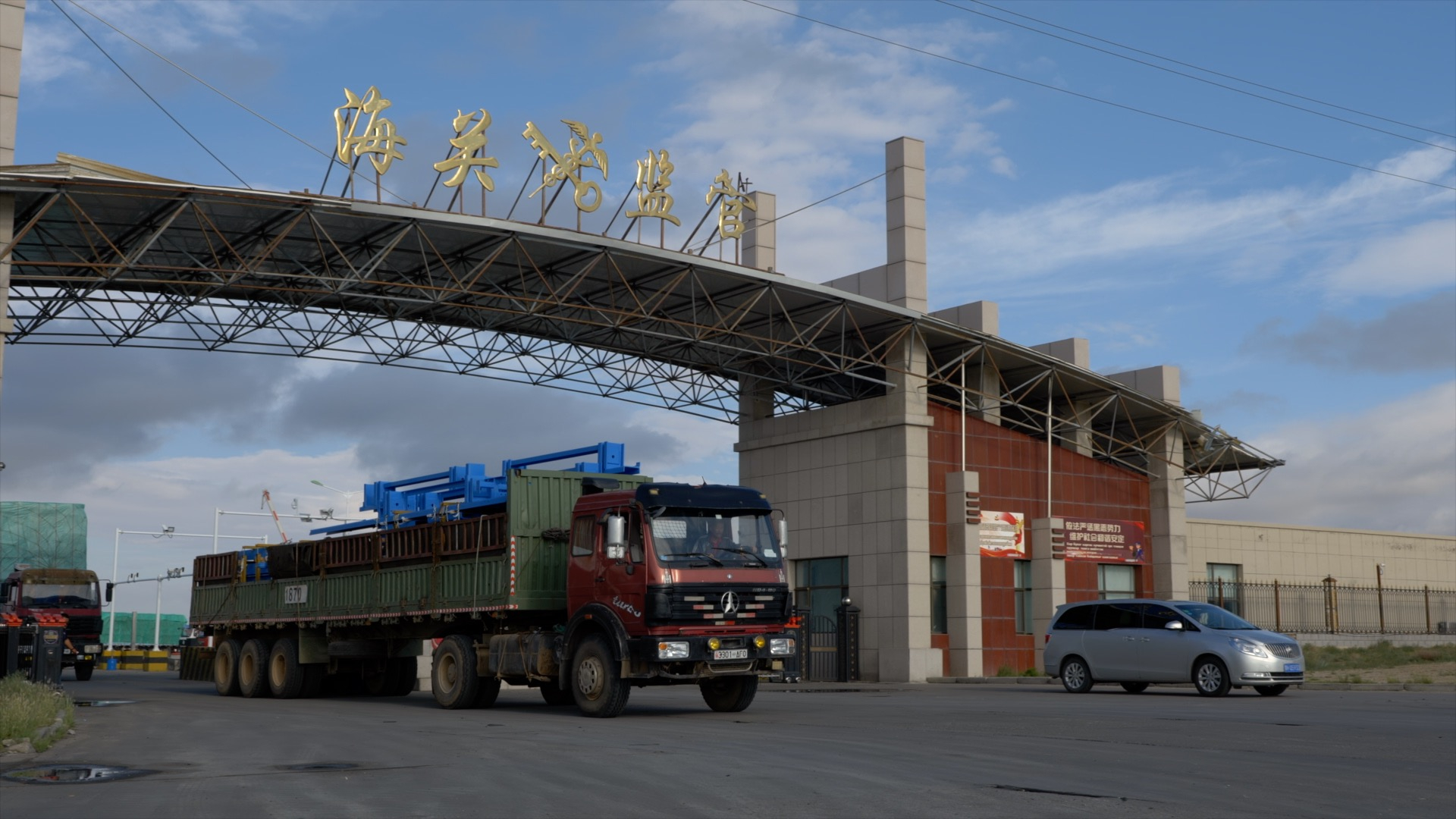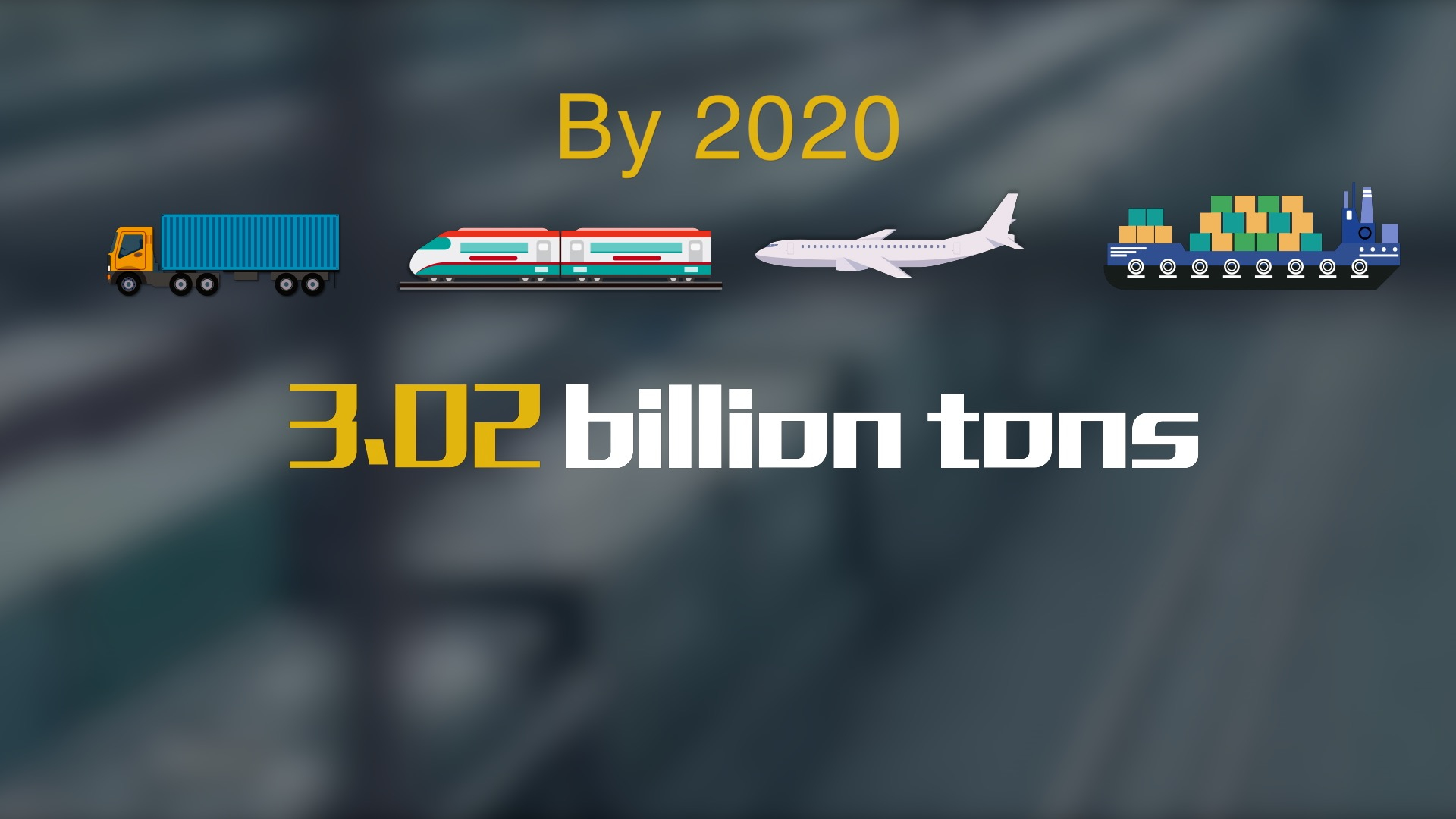07:54

Editor's note: Logistics plays a vital role in people's everyday life. In this episode of "Come Together" series, CGTN tells a story of a Chinese lorry driver who experiences the rapid development of the cross-border logistics between China and Mongolia over the past decades.
"In the past, if you left the main road, there was only grass roads to drive on. Now, the national road network has covered almost everywhere," truck driver Wang Rimao told CGTN.
Fifty-one-year old Wang is a cross-border truck driver based in Erenhot in north China's Inner Mongolia Autonomous Region. His job is to deliver Chinese goods to neighboring Mongolia via the Erenhot Port. It's in this role that he's witnessed the rapid development of cross-border logistics between the two countries.
"I've been driving for over 30 years, and mostly driving on my own. The 660-km route from Erenhot to Beijing used to take me three days. The road condition is much better now. It only takes 10 hours," Wang said.
Exactly as Wang said, the total length of all roads in China has expanded rapidly in the past three decades, growing from 1.01 million kilometers in 1989 to 4.85 million kilometers by 2018. Among them, the length of highways reached 142,600 kilometers, ranking first in the world.
Not only that — the goods being transported have also been updated: From infrastructure materials to high-tech equipment with a wider variety.
This time, Wang was assigned to deliver facilities for building telecommunication base stations in Mongolia. At Erenhot Port, the goods are transferred to Wang's Mongolian counterpart and finally delivered to the recipient.
"It takes only three days to reach the destination, and passing the border is so easy with just a card. In the past, I had to take a lot of paperwork," Munkhbat Puntsag Urtnasan, Wang's Mongolian counterpart, told CGTN.
Five hours later, Urtnasan passed Chinese customs and embarked on his journey in Mongolia.
According to Oyunbileg Uurtsaikh, deputy governor of Office of the Governor of Zamiin-Uud, Mongolia, the government has increased its investment in transport infrastructure as the economy has been growing well these years.

Oyunbileg Uurtsaikh, deputy governor of Office of the Governor of Zamiin-Uud, Mongolia, in an exclusive interview with CGTN. /CGTN Photo
Oyunbileg Uurtsaikh, deputy governor of Office of the Governor of Zamiin-Uud, Mongolia, in an exclusive interview with CGTN. /CGTN Photo
"We are importing more building materials from China and other countries. These goods come to Mongolia through the Zamiin-Uud-Erenhot Port and they have boosted the development of the port," Uurtsaikh said.
China and Mongolia share a border stretching 4,710 km. Trade volume through Erenhot and Zamiin-Uud ports accounts for more than 70 percent of Sino-Mongolian cross-border trade.

The overall exit clearance time at the Erenhot Port was 0.91 hours in the first half of 2019, an 80.92 percent shorter compared to 2018. /CGTN Photo
The overall exit clearance time at the Erenhot Port was 0.91 hours in the first half of 2019, an 80.92 percent shorter compared to 2018. /CGTN Photo
As part of the national efforts for further improving business environment at ports, starting from April 20, 2018, China customs integrated the entry-exit inspection and quarantine service, thereby reducing items for declaration from 229 to 105. Using the Erenhot Port as an example, the overall exit clearance time was 0.91 hours in the first half of 2019 an 80.92 percent shorter compared to 2018.
"We rolled out a single-window service to handle all sorts of customs declaration," Chang Shiying, deputy commissioner of Erenhot Customs, told CGTN. "In the past, the customs hall was always crowded, but now it looks empty because they can do declaration online in advance."
2019 marks the 70th anniversary of the founding of the People's Republic of China. It also marks the 70th anniversary of the Sino-Mongolian diplomatic ties. In recent years, the two countries have adopted a series of preferential policies to enhance bilateral trade. In June 2019, an agreement on the construction of Erenhot-Zamiin-Uud Economic Cooperation Zone was officially signed. It is the first of its kind, and also considered as the synergy of China's Belt and Road Initiative and Mongolia's Development Road Strategy.
"Zamiin-Uud is now building freight gateways which will facilitate the transfer of goods. This project was invested by the Asian Infrastructure Investment Bank and will promote the economic growth in Zamiin-Uud and Erenhot," Uurtsaikh said.
The cross-border logistics between China and Mongolia is an epitome of Chinese logistics industry. Currently, there are around 15 million lorries and nearly 30 million lorry drivers in China, playing a vital role in the country's logistics. One of their growing concerns is how to improve efficiency with the help of technology.
"In recent years, the Ministry of Transport and other departments have been working together to upgrade transport capacity, including drop and pull transport. With more intelligent navigation platforms coming into use, drivers are better informed to plan their journey," Yang Daqing, researcher with China Society of Logistics, told CGTN.
In 2016, China joined the United Nations Transports Internationaux Routiers (TIR) Convention, becoming its 70th member.
"Joining the TIR enables China to better implement the six economic corridors under the Belt and Road Initiative. Highways, high-speed railways and airways, are combined into an integrated transportation system, forming a multimodal transport," Yang said.
According to World Bank's Logistics Performance Index, among the 160 countries and regions, China improved from position 30 in 2007 to 26 in 2018, with the most evident improvement observed in the quality of trade and transport related infrastructure.

The volume in multi-modal transport in China will hit 3.02 billion tons by 2020. /CGTN Animation
The volume in multi-modal transport in China will hit 3.02 billion tons by 2020. /CGTN Animation
Statistics from the Ministry of Transport show that volume in multi-modal transport in China reached 1.37 billion tons in 2017, accounting to 2.9 percent of the total freight. According to the national planning, the figure would hit 3.02 billion tons by 2020.
"The trade between countries can influence logistics in return, making all parties linked in the chains of logistics," Yang said. "The idea of building a community of shared future for mankind can be better and more effectively carried out via well-developed logistics."